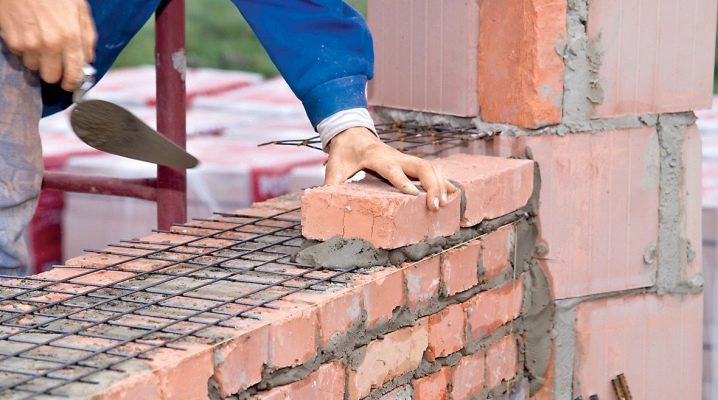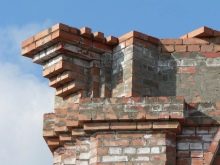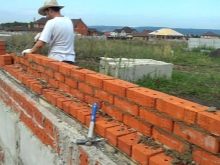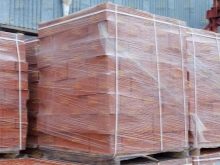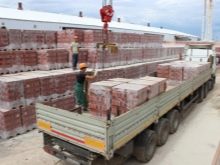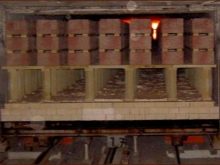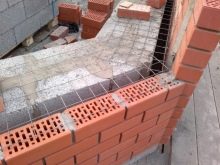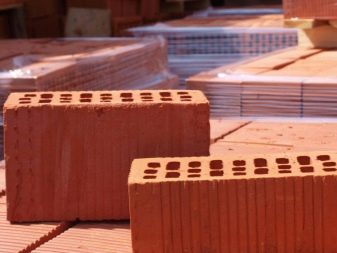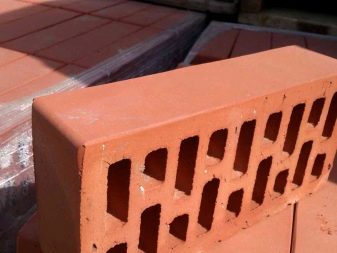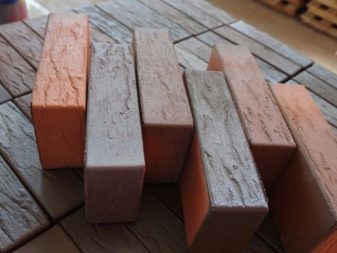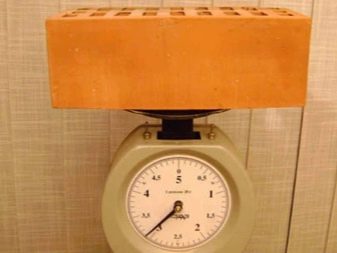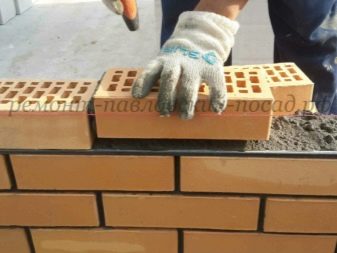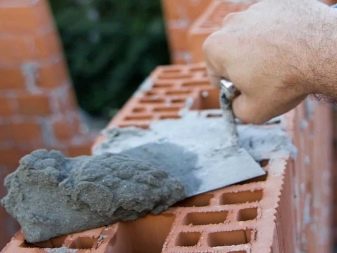The weight and volume of the brickwork
The weight of the brickwork is an important indicator and is calculated at the design stage. The strength and appearance of the future foundation, as well as the design solutions and the architecture of the building, depend entirely on how heavy the supporting walls are.
The need to determine the mass
Knowing the weight of one cubic meter of brickwork is necessary for many reasons. First of all, this is, of course, the calculation of the maximum allowable load on the foundation and floors. A brick is considered to be a rather heavy building material, therefore, in order to use it for the construction of capital walls, it is necessary to clearly correlate the allowed load and the specific gravity of the brick. Often the limitation for the use of bricks, especially silicate and hyper-pressed models of full-bodied execution, is the type of soil.So, on loose and mobile soils brick laying is not recommended. In such cases, alternative materials should be used: expanded clay concrete blocks, foam concrete, gas silicate material or slag blocks.
Knowing the exact weight of one cube. m brickwork, you can calculate not only the strength of the foundation, but also to determine the margin of safety of each section of the bearing wall. This is especially important for calculating the load on the lower and ground floors, as well as for selecting the brand of cement mortar and reinforcing elements of the structure. In addition, an accurate knowledge of the mass of the brickwork allows you to calculate the necessary load capacity of the vehicle, which will be used to remove construction debris when dismantling structures and disassembling walls.
What influences weight?
The masonry mass is primarily influenced by the material used to make the brick. Ceramics are considered to be the easiest, for the manufacture of which clay and plasticizers are used. Products are molded using a special press, and then sent to the kiln for firing. Silicate and hyperpressed products are slightly heavier.For the manufacture of the first used lime and quartz sand, and the basis of the second is cement. Clinker models also have a rather large weight, are made from grades of refractory clay, followed by firing at very high temperatures.
In addition to the material of manufacture, the type of brick performance has a huge impact on the weight of a square meter of masonry. On this basis, there are two large groups of products: solid and hollow models. The first ones are monolithic products of regular shapes that do not contain figured holes and internal cavities. Solid stones weigh an average of 30% heavier than their hollow counterpart. However, this material has a high thermal conductivity and is rarely used for the construction of load-bearing walls. This is due to the absence of an air gap in the brick body and its inability to prevent the heat loss of the premises during the cold period.
Hollow models have higher performance and lower weight, which allows them to be used most actively in the construction of external walls. Another factor affecting the mass of brickwork is brick porosity.The more internal cavities a product has, the higher its heat-insulating qualities and lower weight. To increase the porosity of ceramic models in the raw materials, sawdust or straw is added to the raw materials, which burn out during the firing process and leave a large number of small air voids in their place. This allows for the same volume of material to significantly reduce its mass.
In addition, the weight of cement mortar and metal fittings has a huge impact on the masonry mass. The first factor depends on the professionalism of the bricklayer, as well as on how thick it is applying the mortar. The mass of reinforcing elements depends on the number and type of metal structures needed to impart increased strength and seismic resistance to the walls of the building. It often happens that the total mass of cement mortar and reinforcing mesh is almost equal to the net weight of the brick.
Calculation rules
Before proceeding to the calculation of the masonry mass of brick, you should familiarize yourself with some terms. There is a specific and volume weight of a brick. Specific weight is determined by the ratio of weight to occupied volume and is calculated according to the following formula: Y = P * G, where P is the brick density, and G denotes a constant value equal to 9.81.The specific gravity of a brick is measured in newtons per cubic meter and is denoted as N / m3. To transfer the received numbers to the SI system, they need to be multiplied by a factor of 0.102. Thus, with an average weight of full-bodied models of 4 kg, the proportion of masonry will vary from 1400 to 1990 kg / m3.
Another important parameter is the volume weight, which, unlike the specific weight, takes into account the presence of cavities and voids. This value is used to determine the mass of not every brick separately, but at once a whole cubic meter of products. It is the volumetric weight of products that serves as an indicative value and is taken into account when calculating the mass of brickwork directly during construction.
Knowing the weight of one brick and the number of copies in one cubic meter of masonry, you can easily calculate how much the whole masonry weighs. To do this, it is enough to multiply both numbers and add the mass of cement mortar to the obtained value. Thus, 513 full-bodied single silicate products of a standard size of 250x120x65 mm fit in one cubic meter, and the weight of a single brick is 3.7 kg. Therefore, one cube of masonry will weigh 1898 kg without taking into account the weight of the solution.One-and-a-half silicates weigh already about 4.8 kg per item, and their number per cubic meter of masonry reaches 379 pieces. Accordingly, the laying of such a volume will weigh 1,819 kg without taking into account the weight of cement.
The calculation of the masonry masonry of red brick is made in the same way, but with the difference that single-bodied models weigh 3.5 kg, while the weight of hollow reaches 2.3-2.5 kg. This means that one cube of ceramic masonry will weigh from 1,690 to 1,847 kg without taking into account the cement mortar. However, it should be noted that these calculations are only suitable for products of standard size 250x120x65 mm. So, narrow hollow models with a width not of 120, but of 85 mm will weigh only 1.7 kg, while the weight of overall copies of 250x120x88 mm will reach 3.1 kg.
As for the consumption of cement, an average of 0.3 m3 of mortar is spent per cubic meter of masonry, the mass of which reaches 500 kg. Thus, the resulting net weight of a cubic meter of brick should be added 0.5 tons. As a result, the brickwork has an average weight of 2-2.5 tons.
However, these calculations are only approximate. To determine the weight of a structure with an accuracy of a kilogram, it is necessary to take into account a number of purely individual factors for each case.These include the conditions for the storage of bricks and the coefficient of its water absorption, the brand of cement, the consistency of the mortar and the total weight of reinforcing elements.
How to calculate the brickwork, see the next video.
